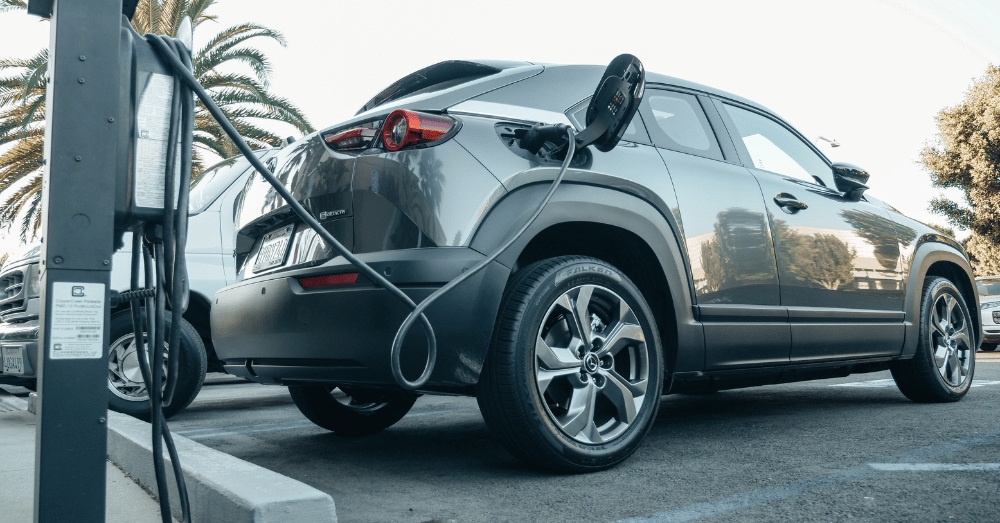The clock is ticking for electric vehicle shoppers. With the federal EV tax credit disappearing on September 30, 2025, buyers face a scramble to lock in savings that could total $7,500 on new models or $4,000 on pre-owned ones. But here’s what might surprise you: the used EV market is actually in better shape than most people realize. Pre-owned electric cars are selling faster than their gas-powered counterparts, and prices have dropped enough that savvy shoppers might find better deals going used, even without the tax credit.
- Federal EV tax credits end September 30, 2025, but you only need a signed contract and deposit by that date to qualify, even if delivery happens later
- Used EV prices have dropped 40% since early 2022, while gas car prices only fell 12%, creating unexpected value in the pre-owned market
- Battery health remains the biggest concern for used EV buyers, but most modern electric vehicles show minimal degradation with proper care
The September EV Tax Credit Deadline Changes Everything
September might go down as the biggest EV sales month in history. Dealerships are packed with buyers rushing to grab those federal incentives before they vanish. The $7,500 credit for new EVs and $4,000 for used models have been around since 2022, but they’re getting axed as part of recent federal budget changes.
There’s a silver lining though. You don’t have to actually take delivery by September 30. Sign a binding purchase agreement and put money down before the deadline, and you can still claim the credit when you file taxes, even if your car arrives in October or November. That gives you a bit more breathing room than the headlines suggest.
Why Used EVs Are Having a Moment
Something interesting happened in the used car market this year. Those used electric vehicles that everyone worried would crash in value? They’re actually holding up better than anyone expected. Pre-owned EVs are now selling about as fast as gas cars, and in some cases, faster.
The math is getting hard to ignore. You can walk into a dealership with $33,000 and drive out in a 2024 Ford Mustang Mach-E GT that originally sold for $55,000. A lightly used Tesla Model 3 costs less than a three-year-old Toyota RAV4. We’re talking about electric cars with advanced tech, great range, and all the bells and whistles for the price of a basic gas-powered crossover.
CarMax data shows used electric vehicle prices dropped 40% between January 2022 and February 2025. Meanwhile, gas cars only dropped 12% over the same period. That’s a massive shift in affordability. Around 34% of used EVs on the market are priced under $25,000, and 55% come in under $30,000.
Making Smart Decisions on EV Battery Health
The battery is what makes or breaks a used EV purchase. You wouldn’t buy a laptop without checking the battery life, and the same logic applies here, except the stakes are way higher. A replacement battery can cost anywhere from $15,000 to $22,000.
Start by checking the battery warranty. Most manufacturers cover eight years or 100,000 miles on the battery pack, and that warranty transfers to the second owner. If you’re looking at a five-year-old EV, you’ve still got three years of coverage left. That’s protection you can’t easily replace.
Ask the seller to fully charge the vehicle so you can check its maximum range. Compare that to the original EPA rating for that model year. Most EVs lose about one to two percent of range per year. A 2021 model with 280 miles of range today versus an original 300 miles? That’s normal. But if it’s showing 220 miles, something’s off.

Take a proper test drive. Plan a 40-mile route on flat roads without using heat or AC. Watch how the projected range decreases as you drive. It should drop by roughly the same number of miles you actually travel. If the range drops way faster than the miles covered, the battery might have issues.
Services like Recurrent provide battery health reports for popular models. These reports pull data from similar vehicles and give you a health score plus range predictions. Some dealerships now hand these reports over upfront, which shows they’re confident in the battery’s condition.
EV Shopping: Playing the Timing Game
October 1 is going to be weird. Suddenly, new EVs will cost $7,500 more, effectively. Automakers know this. Some are already planning price cuts and bigger incentives to keep buyers interested. History backs this up. When Tesla and GM hit their sales caps back in 2019 and lost access to the old tax credit, both companies dropped their prices to compensate.
For used EV buyers, losing the $4,000 credit stings less. The used market has already adjusted to reality. These cars are priced based on what people will actually pay, not on government incentives. Come October, you might see even better deals as sellers realize they need to compete harder without that tax credit sweetener.
If you’re shopping now, use the September deadline as a negotiating tool. Dealers know they might have excess inventory sitting around after the tax credits disappear. They want to move units before then. Don’t be afraid to walk away and come back in a few days. The pressure is on them more than you.
What Makes Sense for Your Situation
New EVs still have their place. You get the latest technology, full warranty coverage, and that new car smell. If you can grab the $7,500 credit before September 30 and plan to keep the car for a decade, buying new makes total sense.
But the used market brings something new cars can’t: proven reliability. You can research exactly how that 2022 Hyundai IONIQ 5 or 2021 Kia EV6 has held up in the real world. You can read owner forums, check battery degradation data, and know what you’re getting. That three-year-old EV has already survived the steepest depreciation curve.
The charging network matters too. If you’ve got Level 2 charging at home and your daily commute is under 50 miles, even an older used EV with slightly reduced range will work perfectly. You’re not paying for range you’ll never use.
Where to Go From Here
Start by figuring out your actual needs. How far do you drive daily? Do you have home charging? What’s your budget with and without tax credits? Then research specific models known for battery longevity. The Tesla Model 3, Chevy Bolt (post-recall), and Hyundai IONIQ Electric have strong track records.
Get pre-approved for financing before you shop. Used EV loan rates have gotten more competitive as lenders gain confidence in the technology. Some credit unions offer special rates for electric vehicles, even used ones.
Whether you’re rushing to beat the September 30 deadline or planning to shop in the post-credit market, the numbers tell a clear story: electric vehicles are becoming genuinely affordable, especially in the used market. The technology works, the prices are dropping, and the charging networks keep expanding. That’s the real shift happening here, beyond any temporary tax credit.
This post may contain affiliate links. Meaning a commission is given should you decide to make a purchase through these links, at no cost to you. All products shown are researched and tested to give an accurate review for you.

